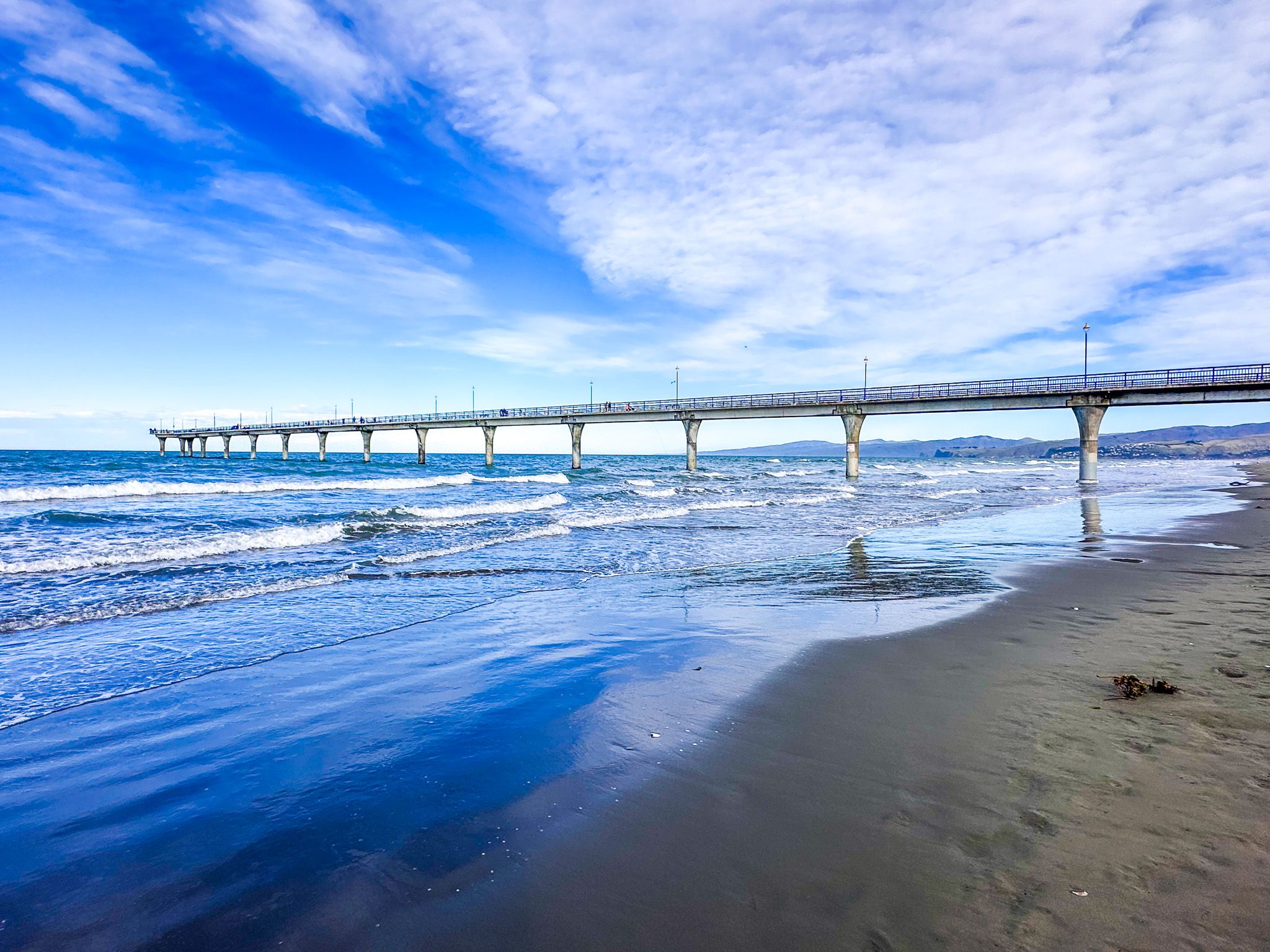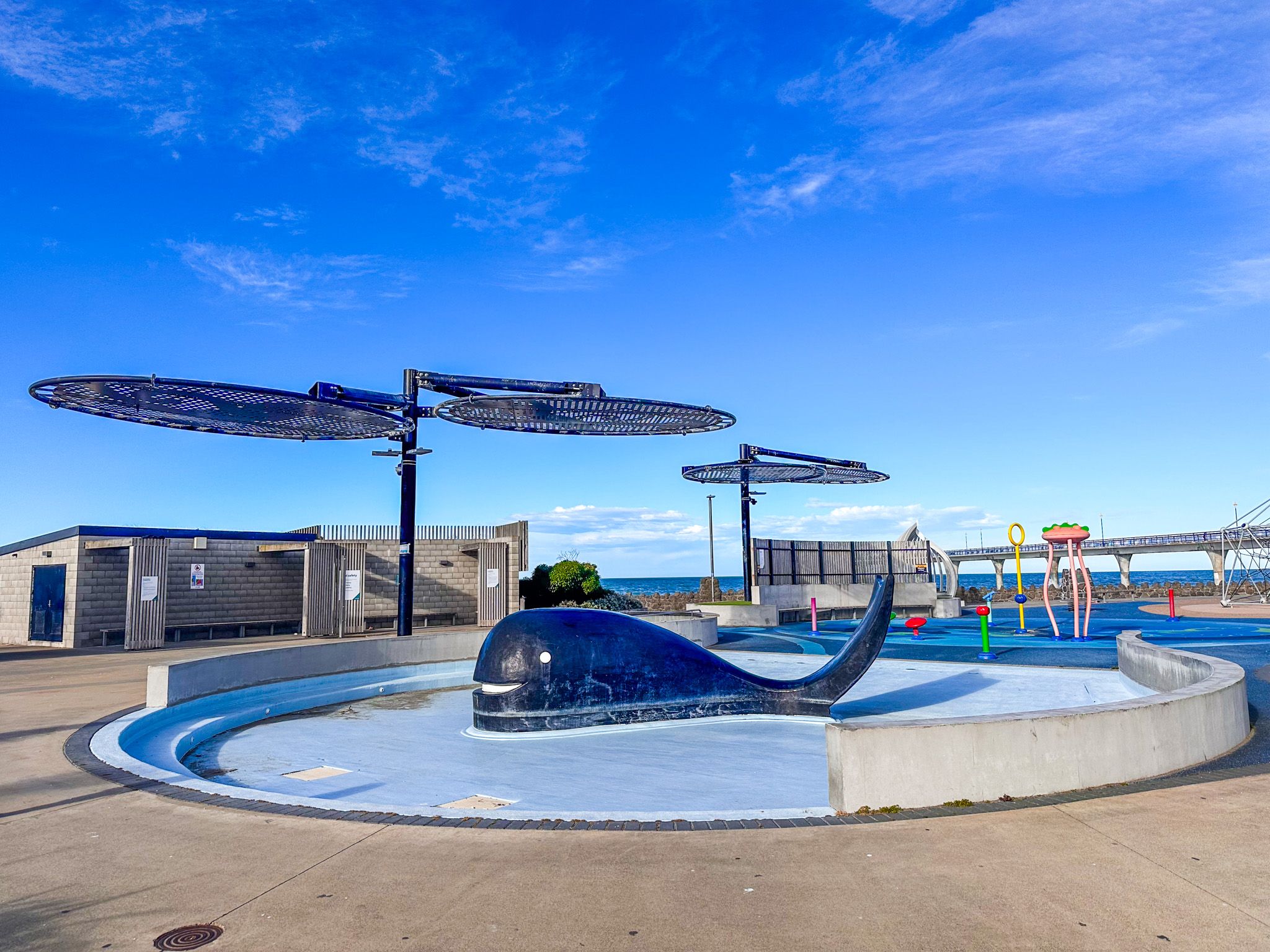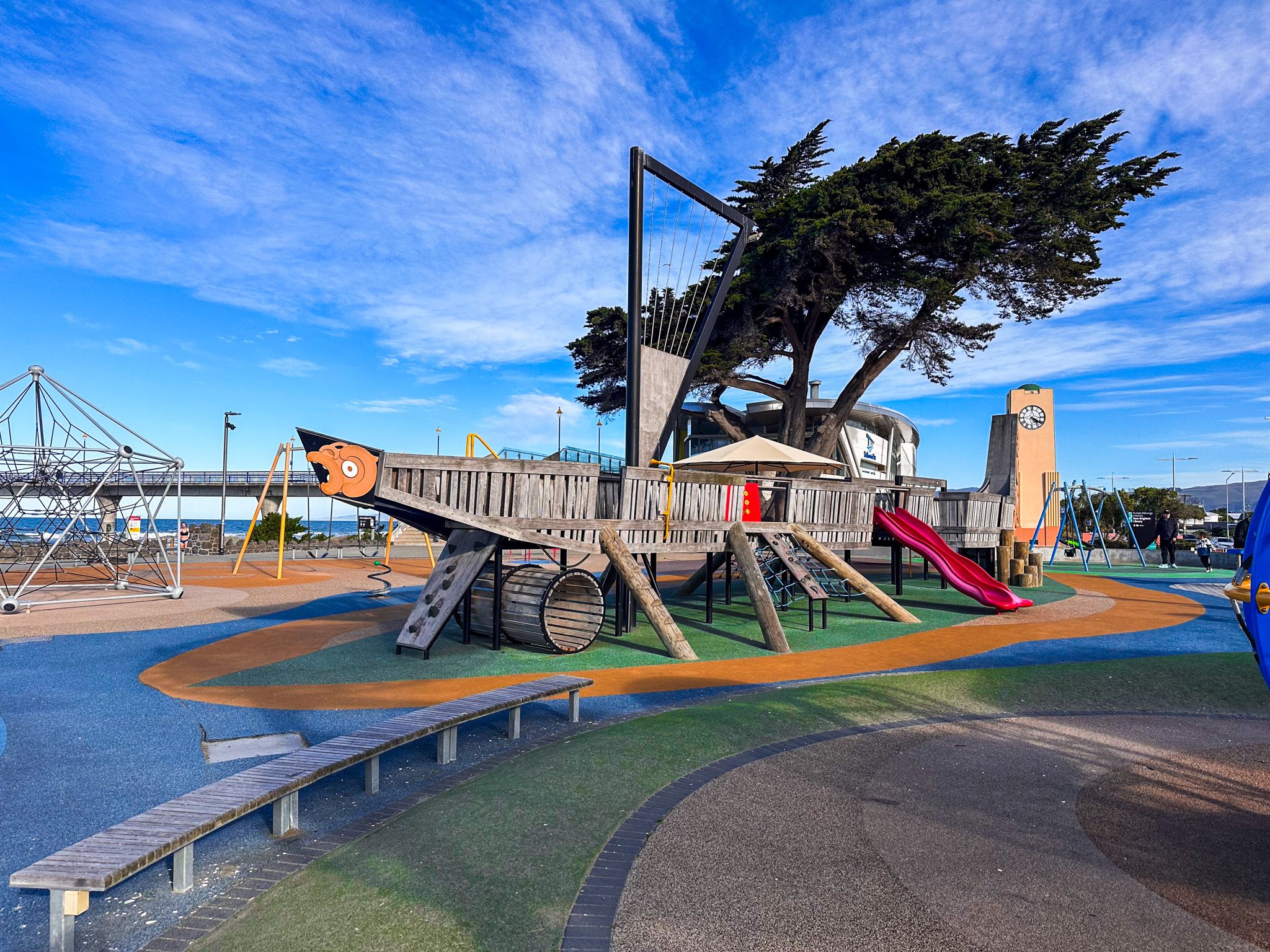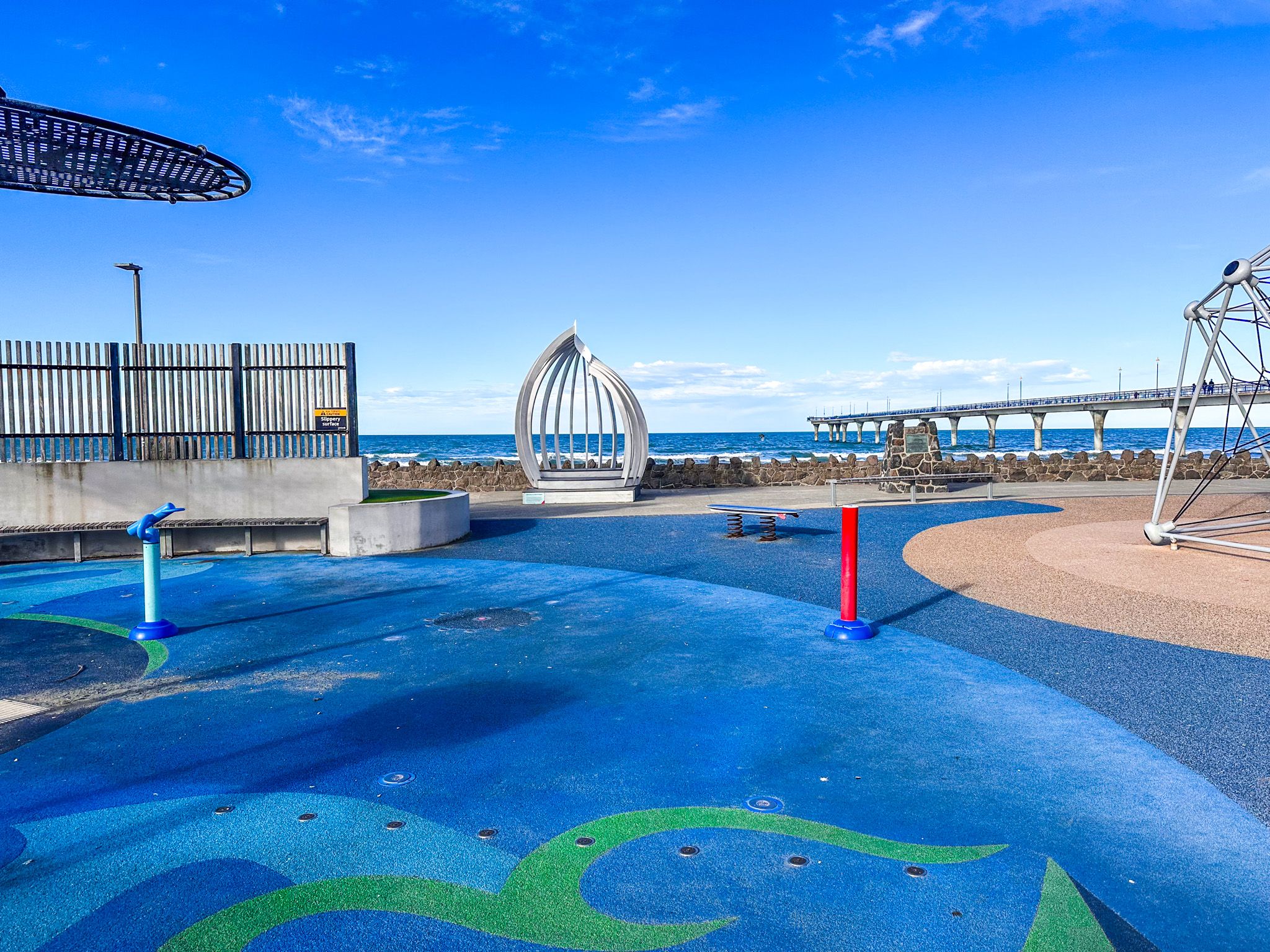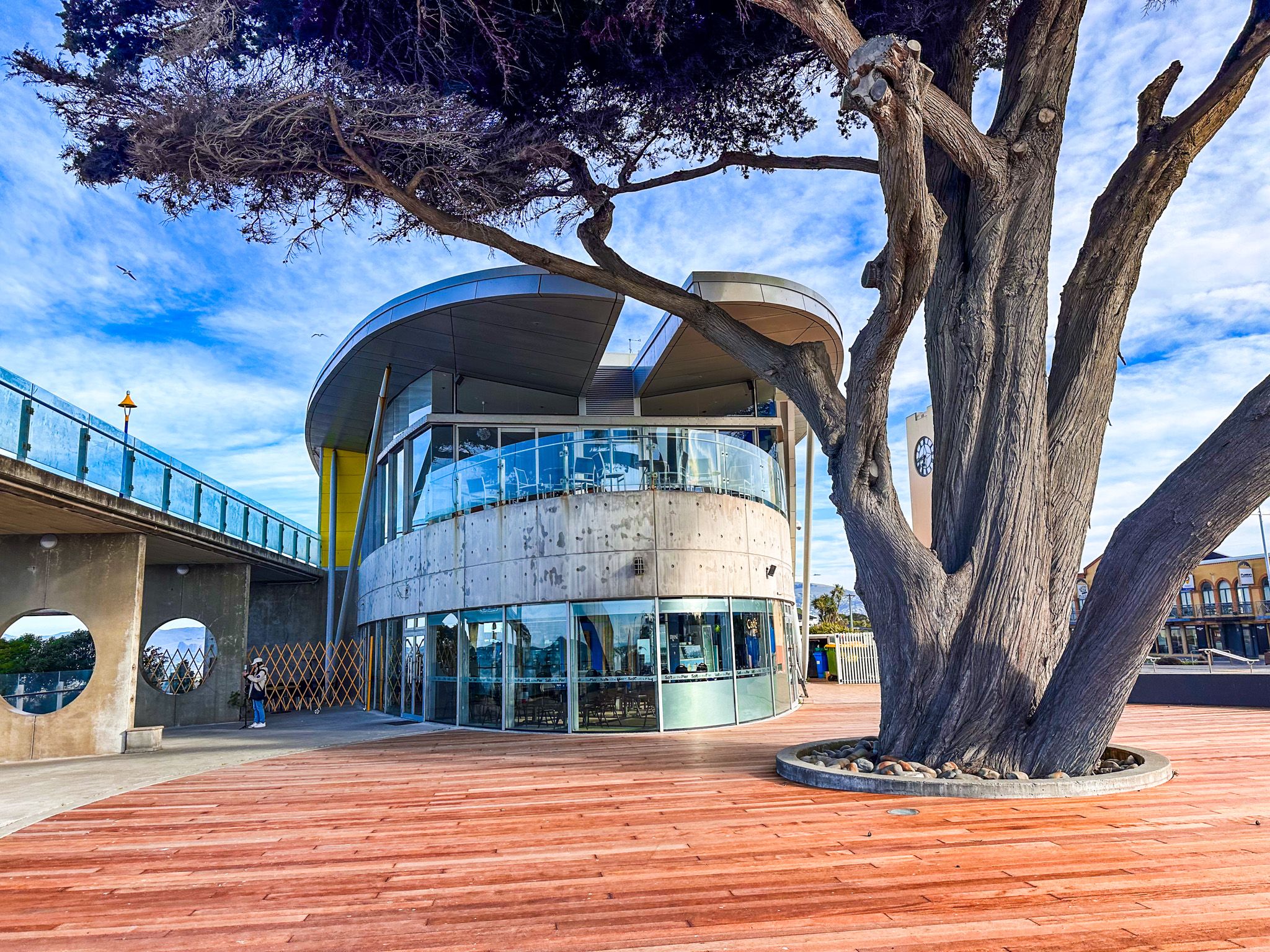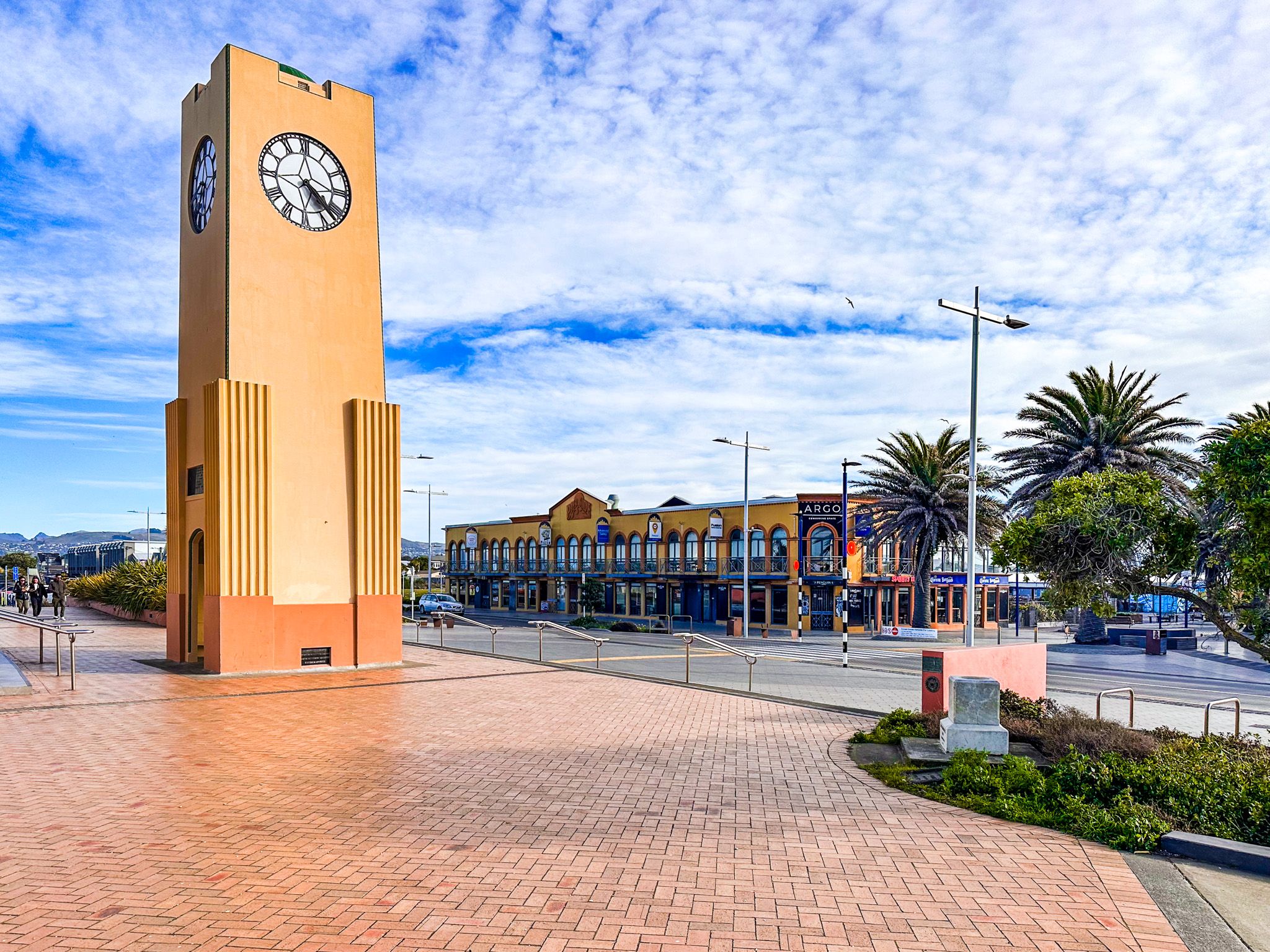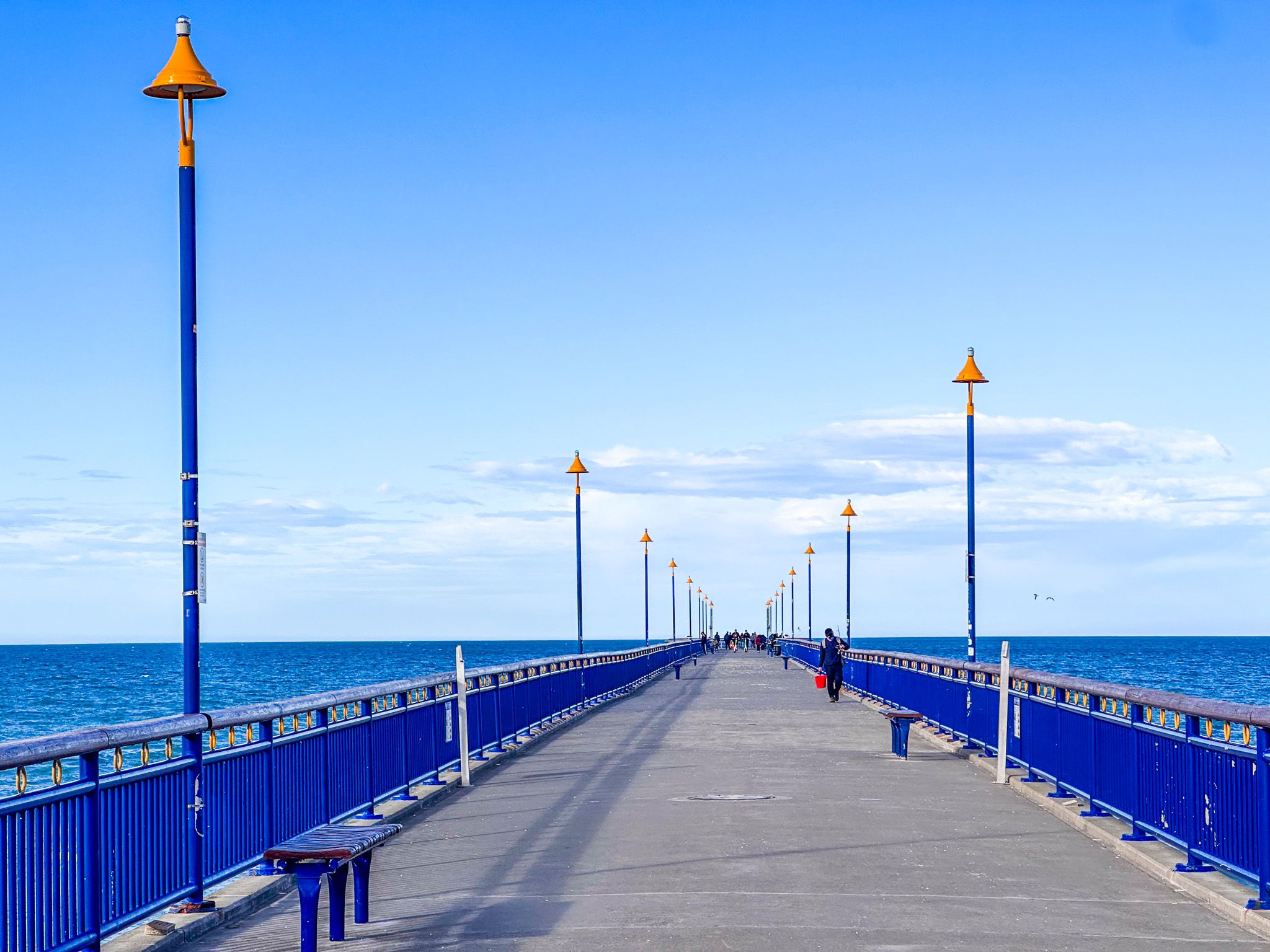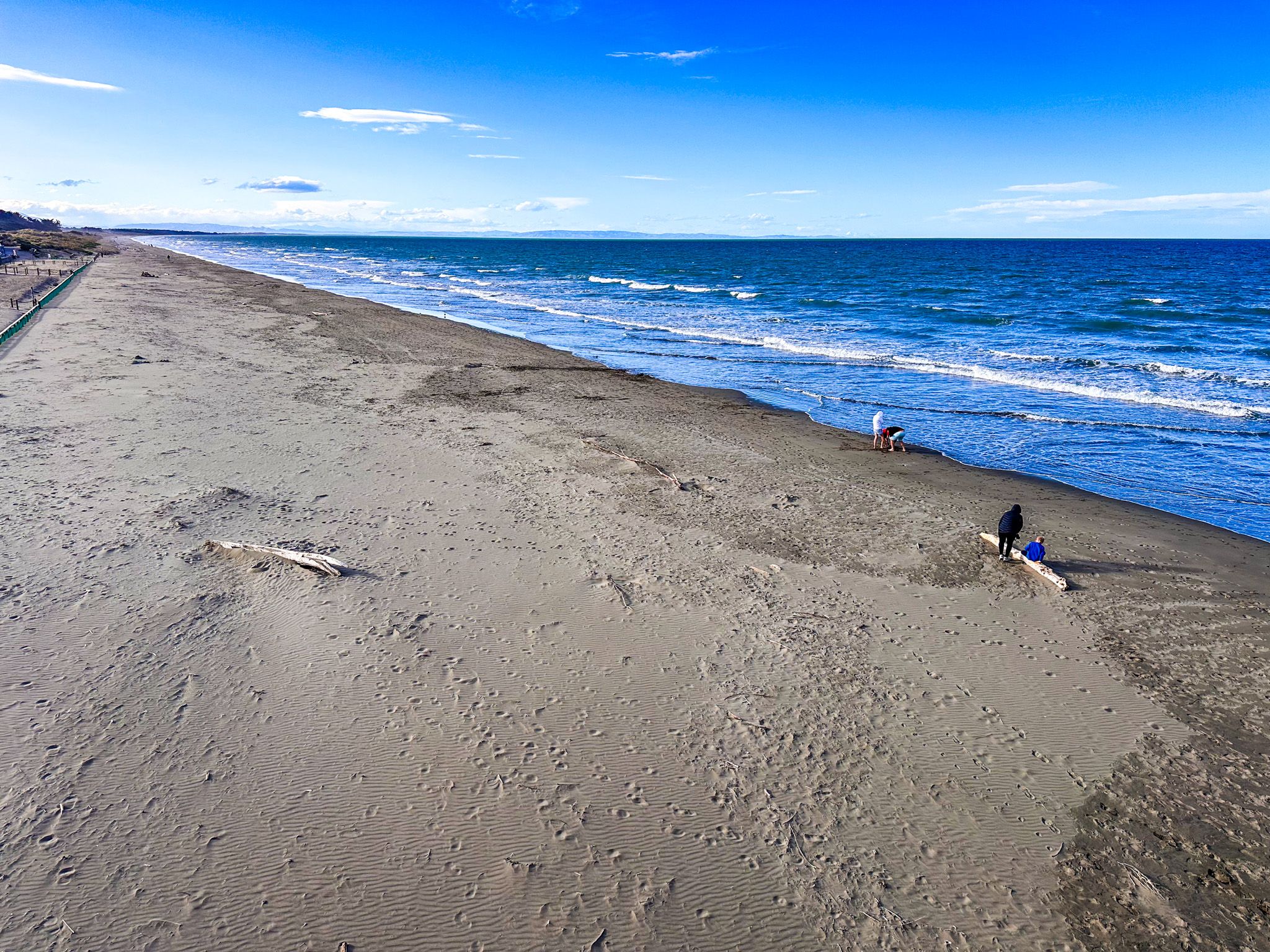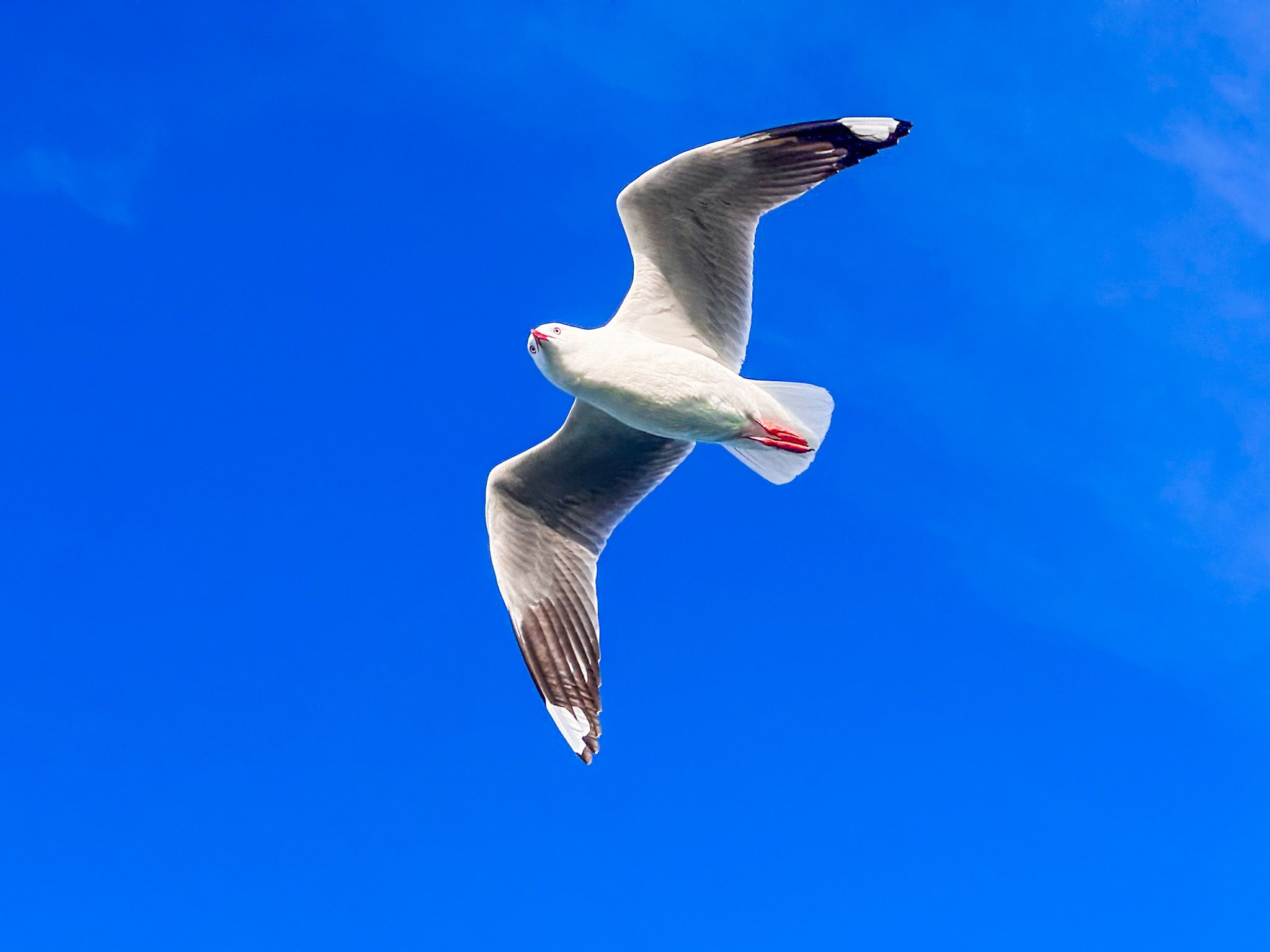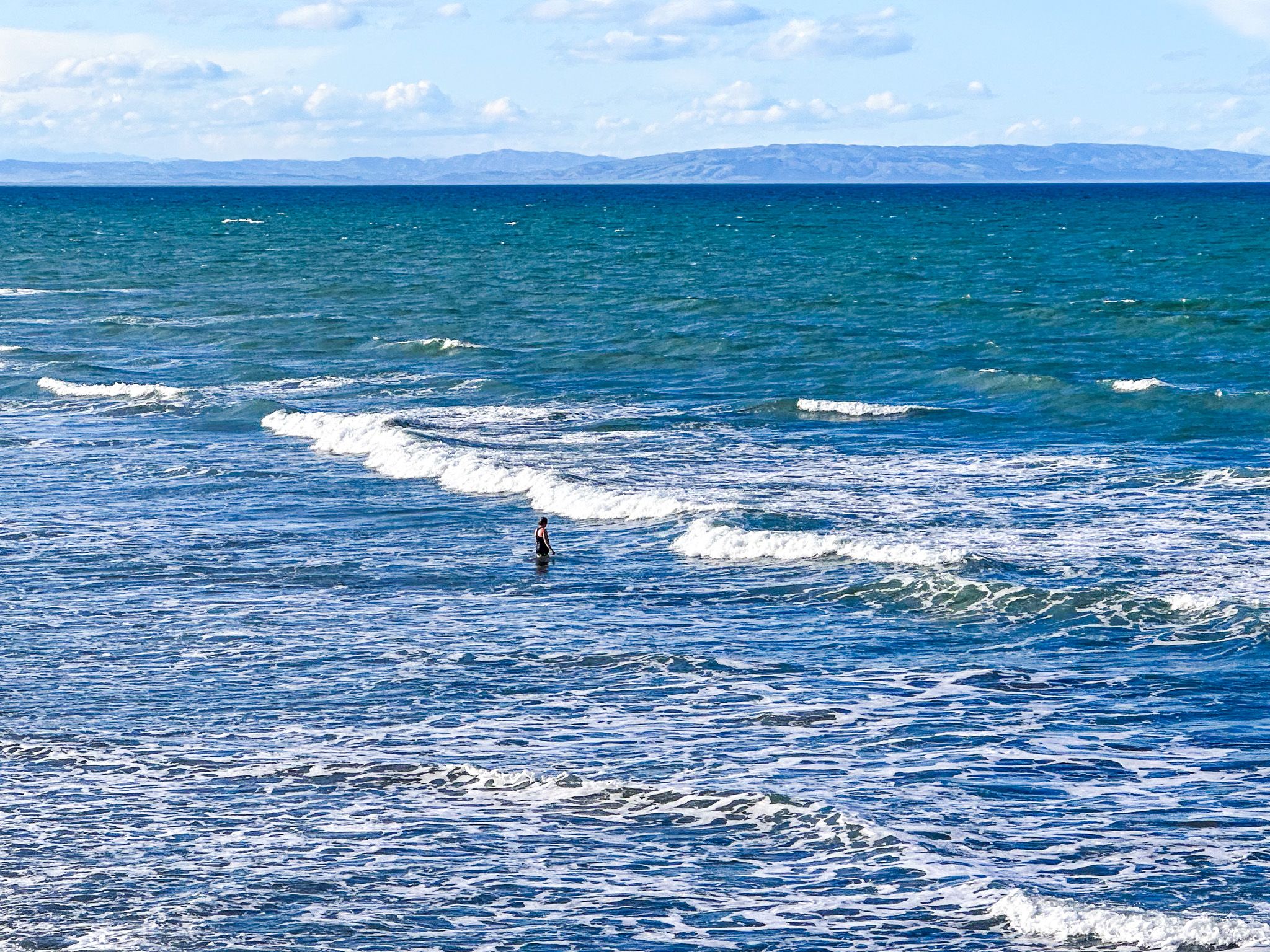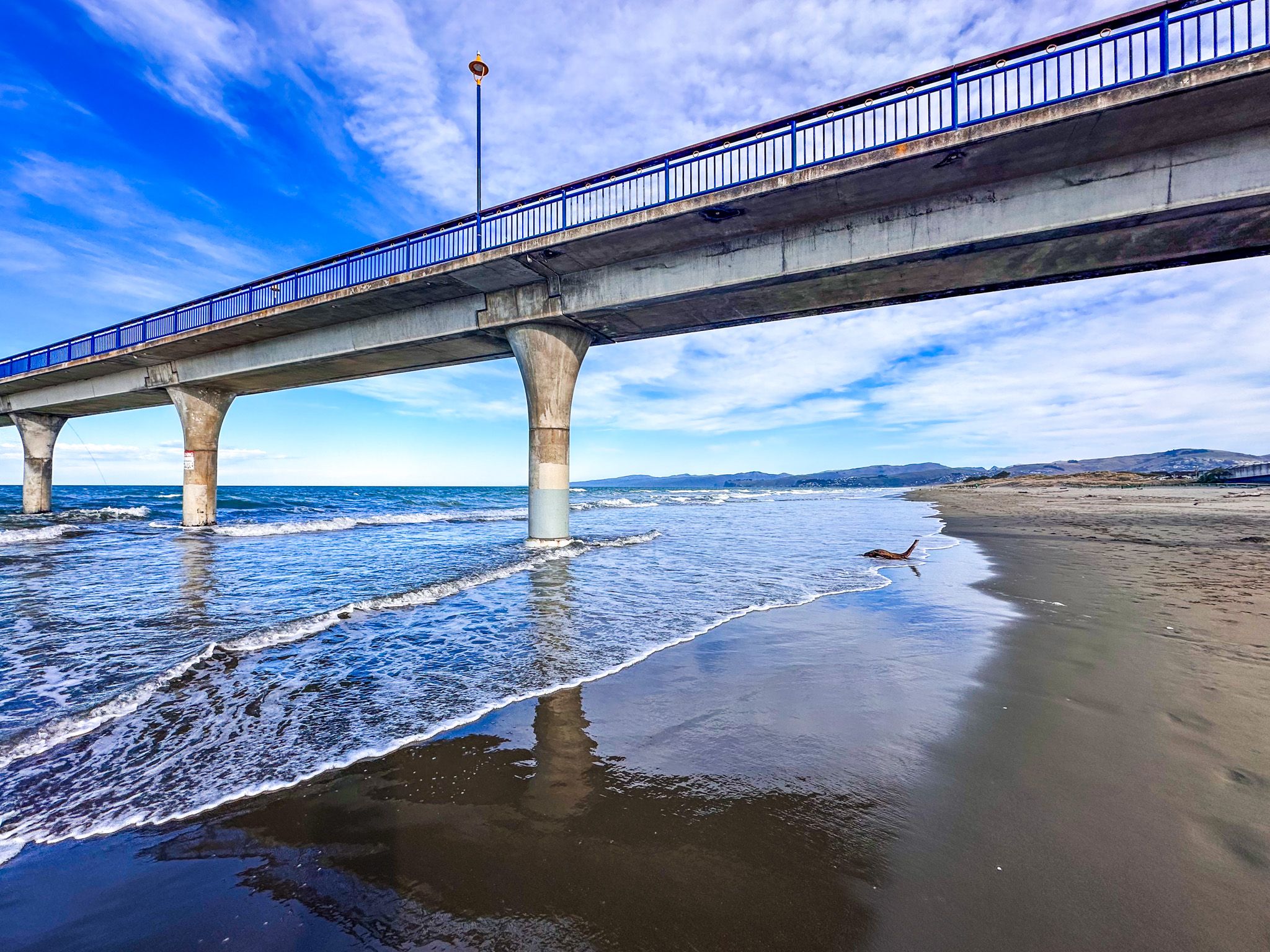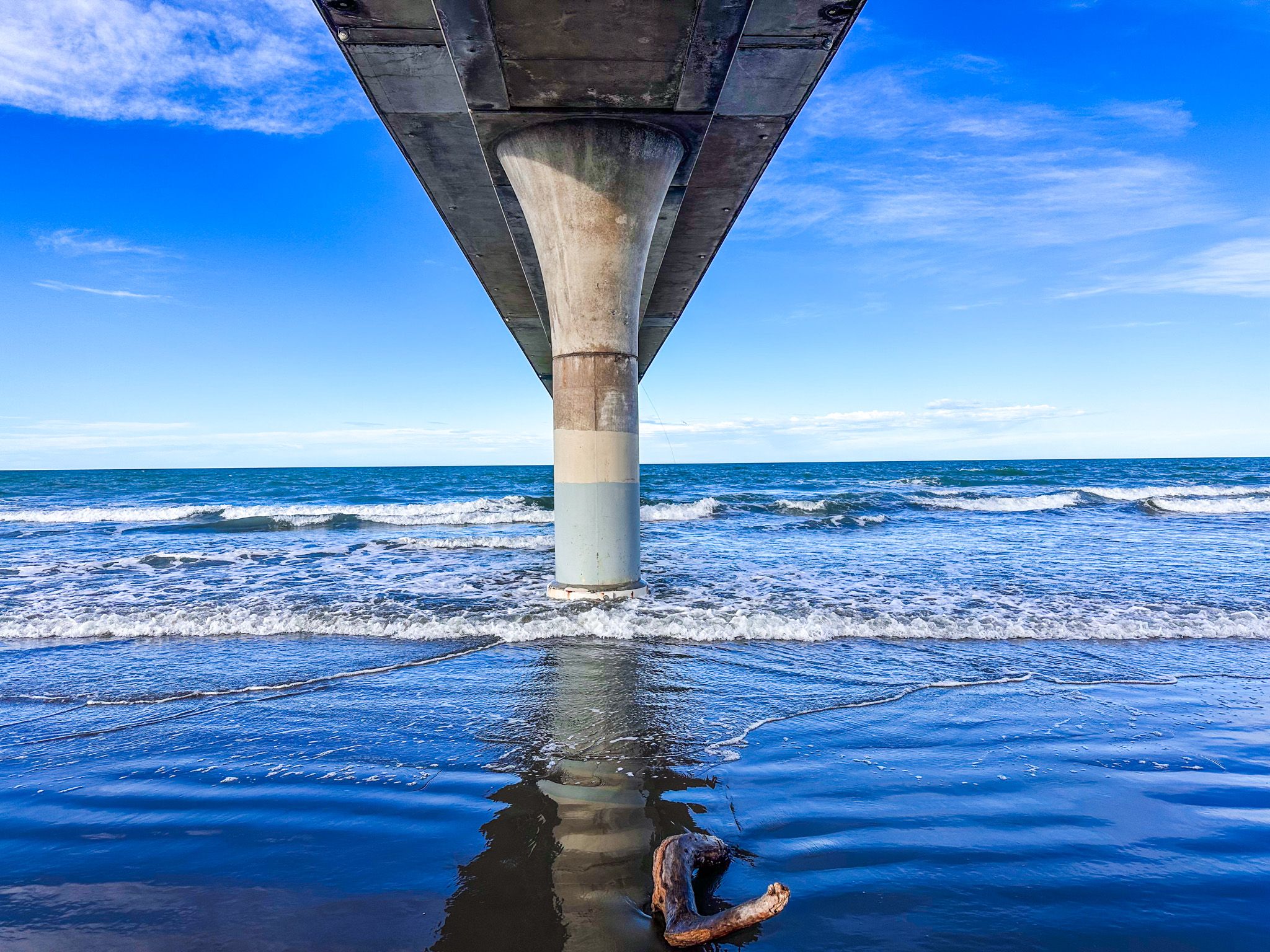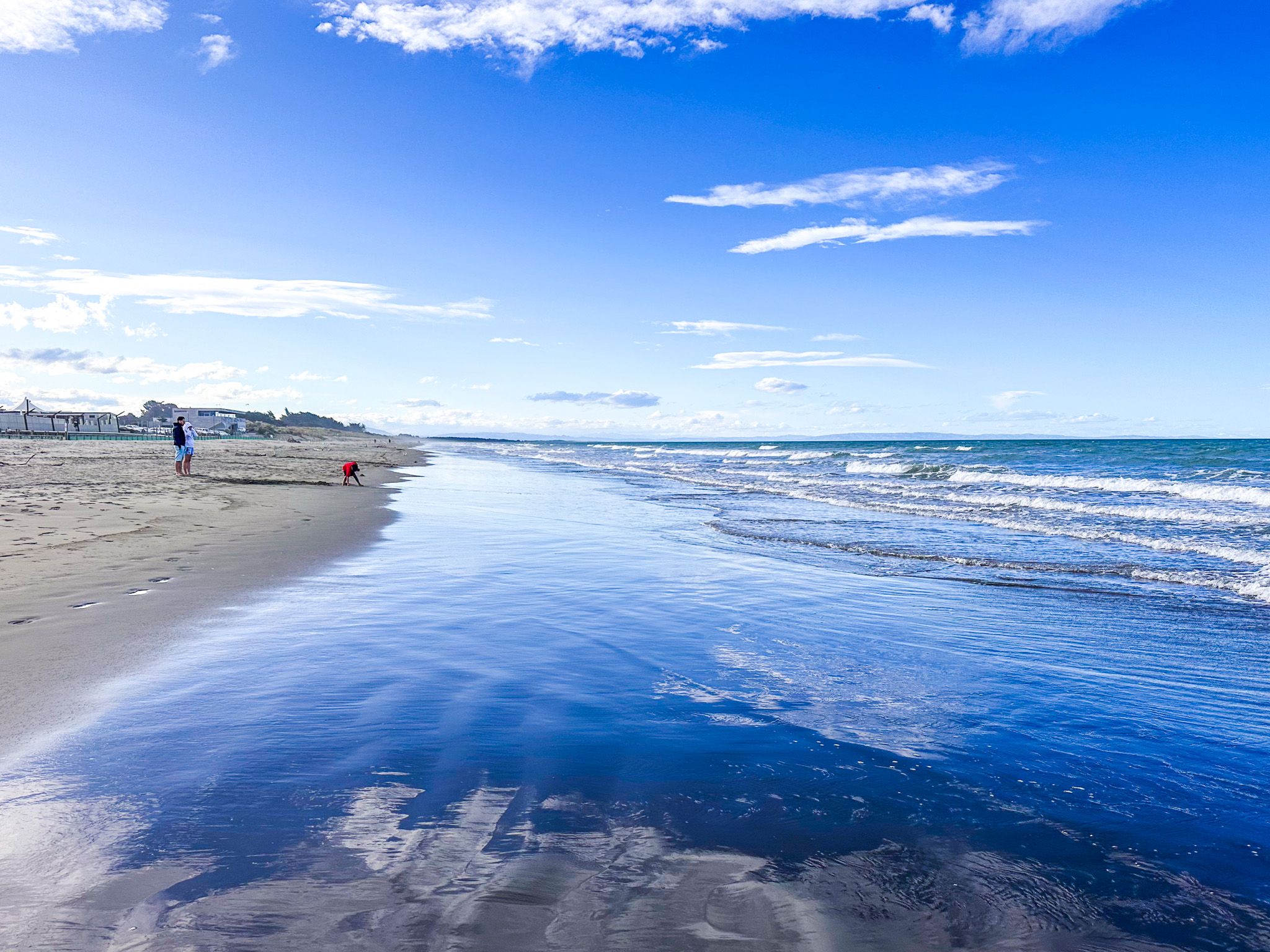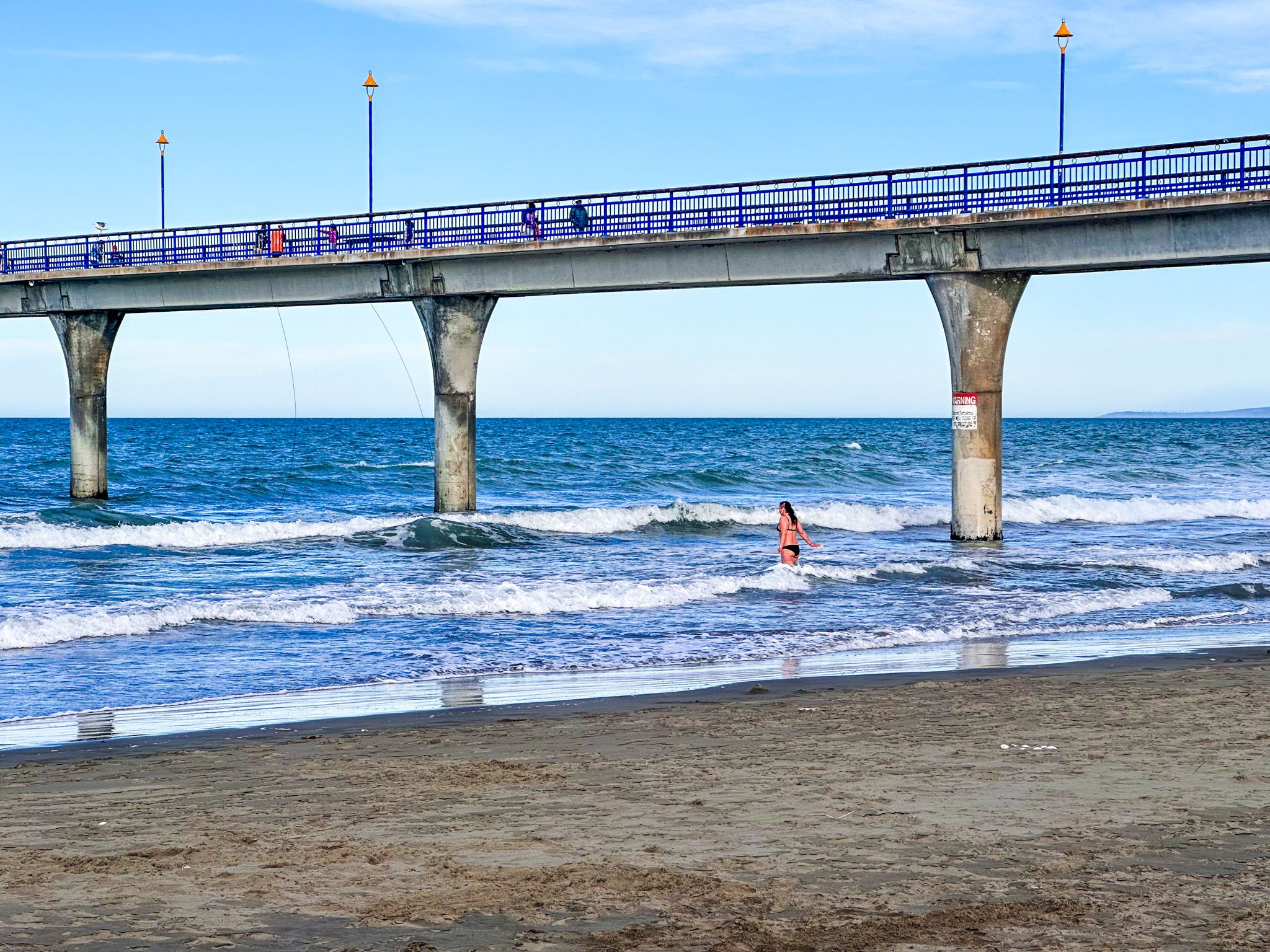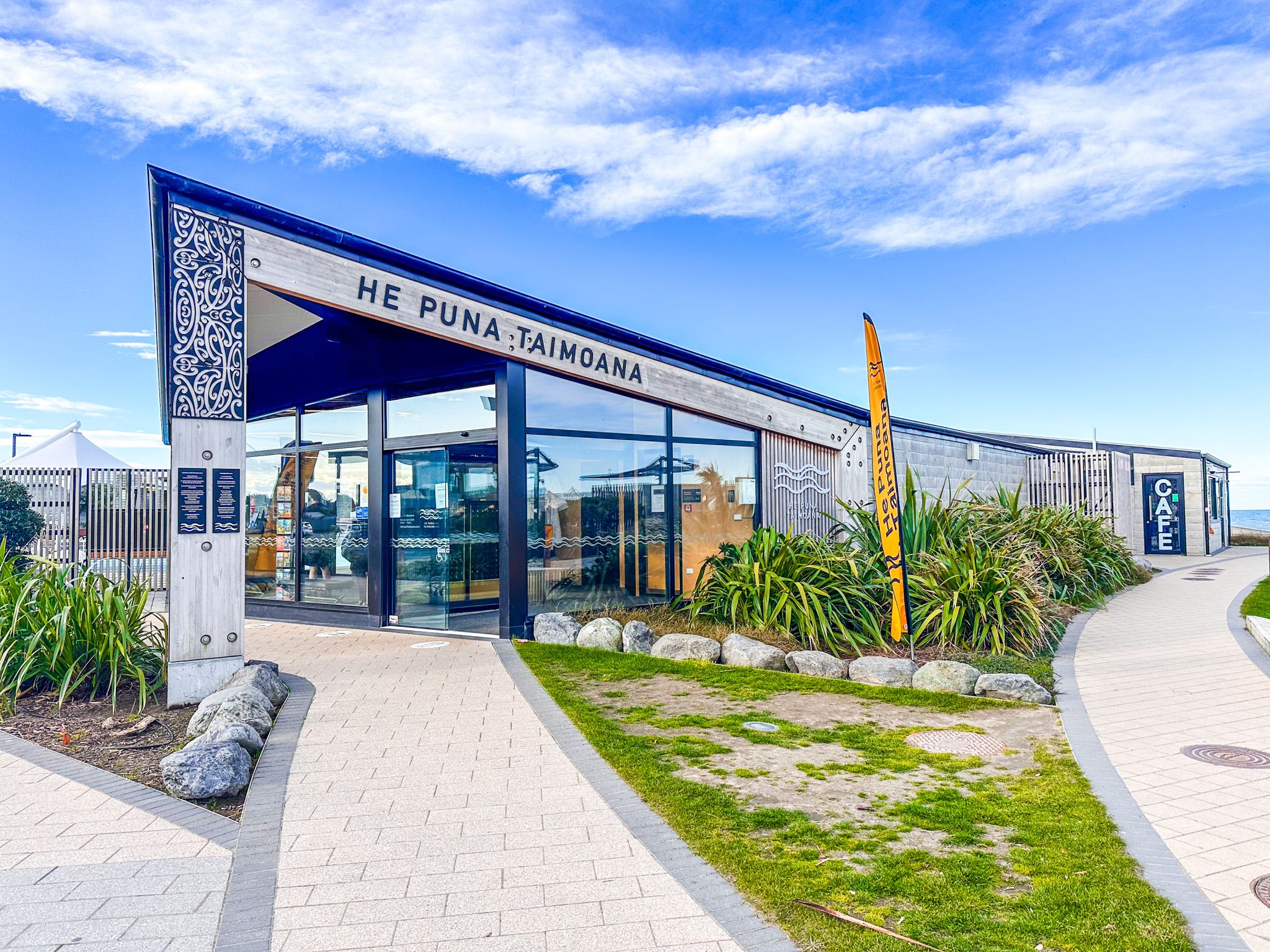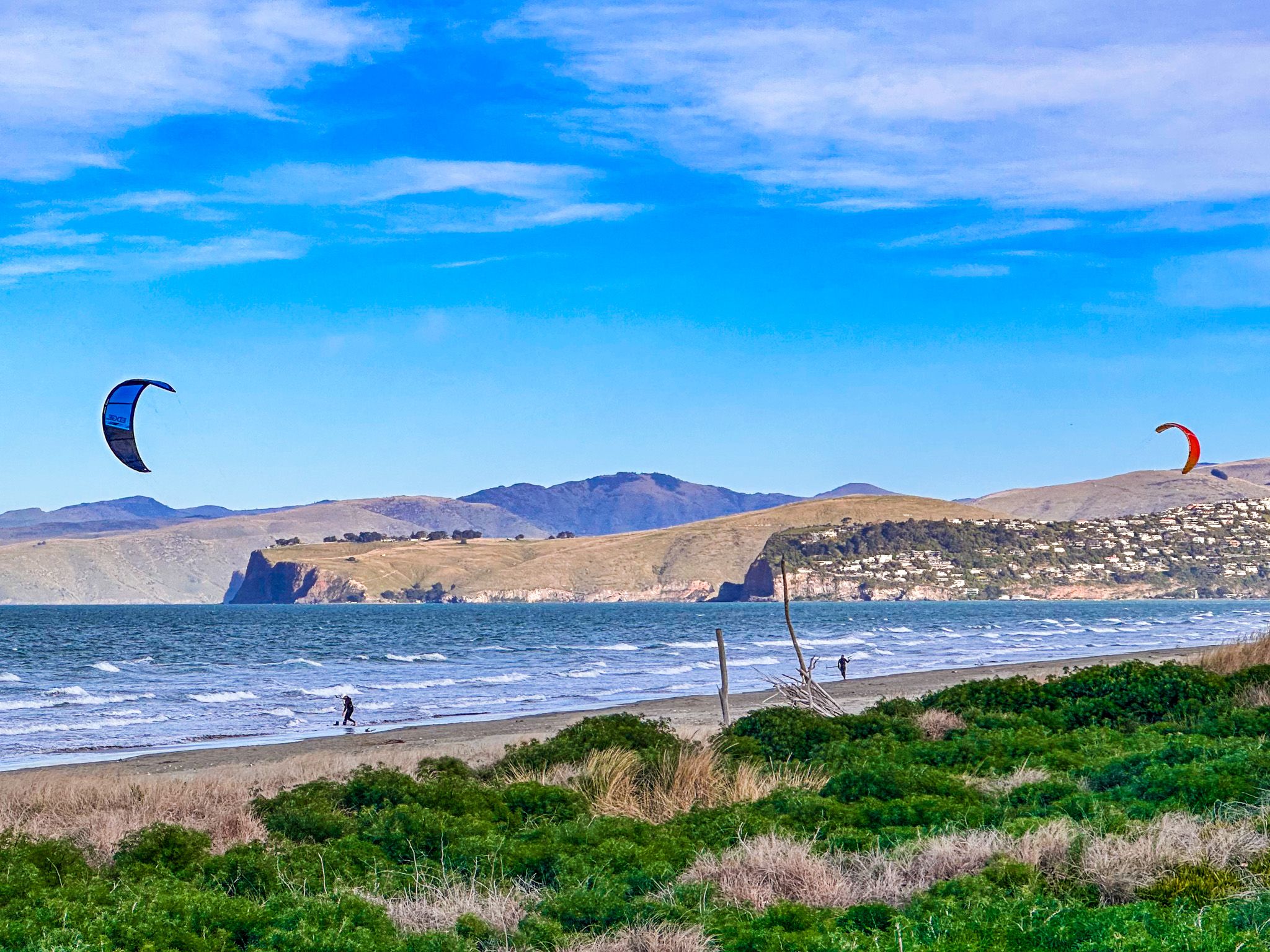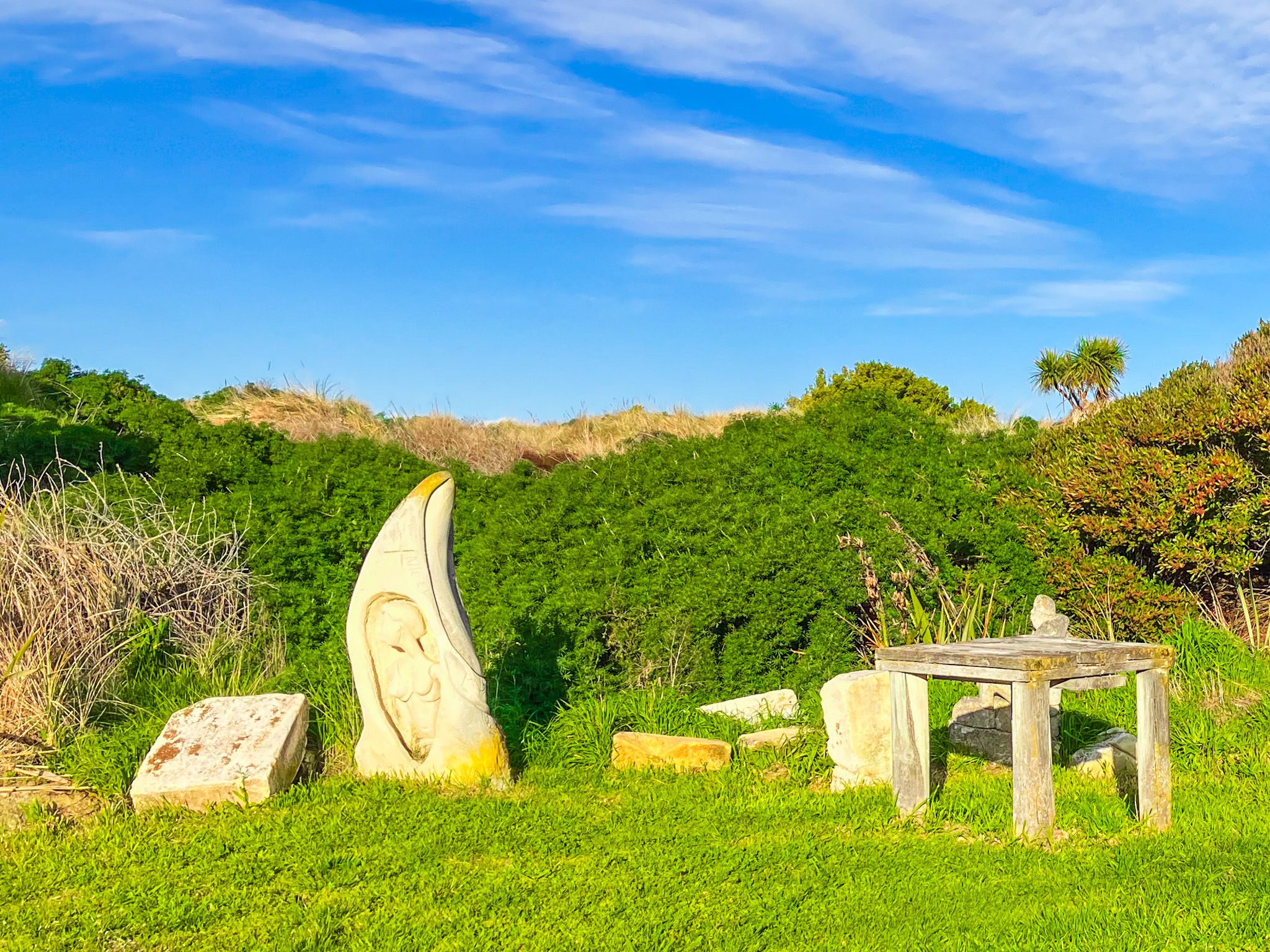New Brighton is a beach and coastal suburb of Christchurch / Ōtautahi located 8 km east of Central Christchurch. It is known for its unique pier and long scenic Pacific coast surf beach within 75 km wide Pegasus Bay. The suburb sits east of the Avon River / Ōtākaro as it flows south into the Estuary of the Heathcote and Avon Rivers / Ihutai. At the north end of the suburb, the beach becomes Waimairi Beach. The southern part of the suburb is a long finger of dunes that ends with the suburb of Southshore at the estuary's entry to the ocean, opposite the suburb of Sumner.
Over the years, New Brighton failed to live up to its English namesake, Brighton, famous for its pier and health spa image. The connection to Christchurch was initially difficult due to the swamplands around the estuary and the wind-swept dunes regularly redeposited sand. However, the pier is a significant attraction today, and the modern adjacent He Puna Taimoana hot pools have added to the spectacular surf beach. The local surf life-saving club is the oldest in NZ. Swimming is safest between the flags and on an incoming tide.
There has been a long Māori presence at New Brighton, which is culturally significant for Ngāi Tahu. The coast and related area is called Te Tai o Mahaanui. Traditional food gathering sites were connected by trails, and a dune track, Pohoareare, ran from South New Brighton around the west side of the estuary to the Heathcote River.
The European name was chosen by William Fee, an early settler, in 1860. Fee chalked "New Brighton" on a wooden plank in a meeting with the land commissioner, supposedly for fellow settler Stephen Brooker, who came from Brighton, England. The first simple settler's home was built in 1858 from mānuka scrub and clay. The living conditions were harsh, and Pacific Ocean winds could deposit a foot of sand on the rough roads, leading to various dune management experiments. Lupins and marram grass were eventually found to be the best for stabilising the dunes, and by 1900, a ton of marram grass seed was planted. Today, the dunes are largely grass-covered.
As the difficulties were overcome, the population expanded and by 1901, New Brighton had reached 1,000 residents. The town became a beach suburb of Christchurch, and the draining of swampland and reclamation around the estuary added land.
In the 1890s, the bright idea of turning New Brighton into a spa town similar to its English namesake first appeared, and a 180-metre wood pier was built. This pier stood until 1965, when it was demolished as unsafe. In the 1990s, the city decided to try again, and a new 300-metre-long concrete pier was constructed. In 1999, a library and cafe were added.
The pier and the suburb were damaged in the earthquakes of 2010 and 2011. The pier was repaired between 2016 and 2018, but red zones affected many houses, especially around the estuary's edge. Renewed investment led to the development of He Puna Taimoana hot pools and a beachside playground near the pier on Marine Parade. The hot pools were on land gifted by Te Rūnanga o Ngāi Tūāhuririri and Matapopore and have been very successful. The name translates as "seaside pools", and New Brighton finally has a spa, plus a much better beach than its namesake.
